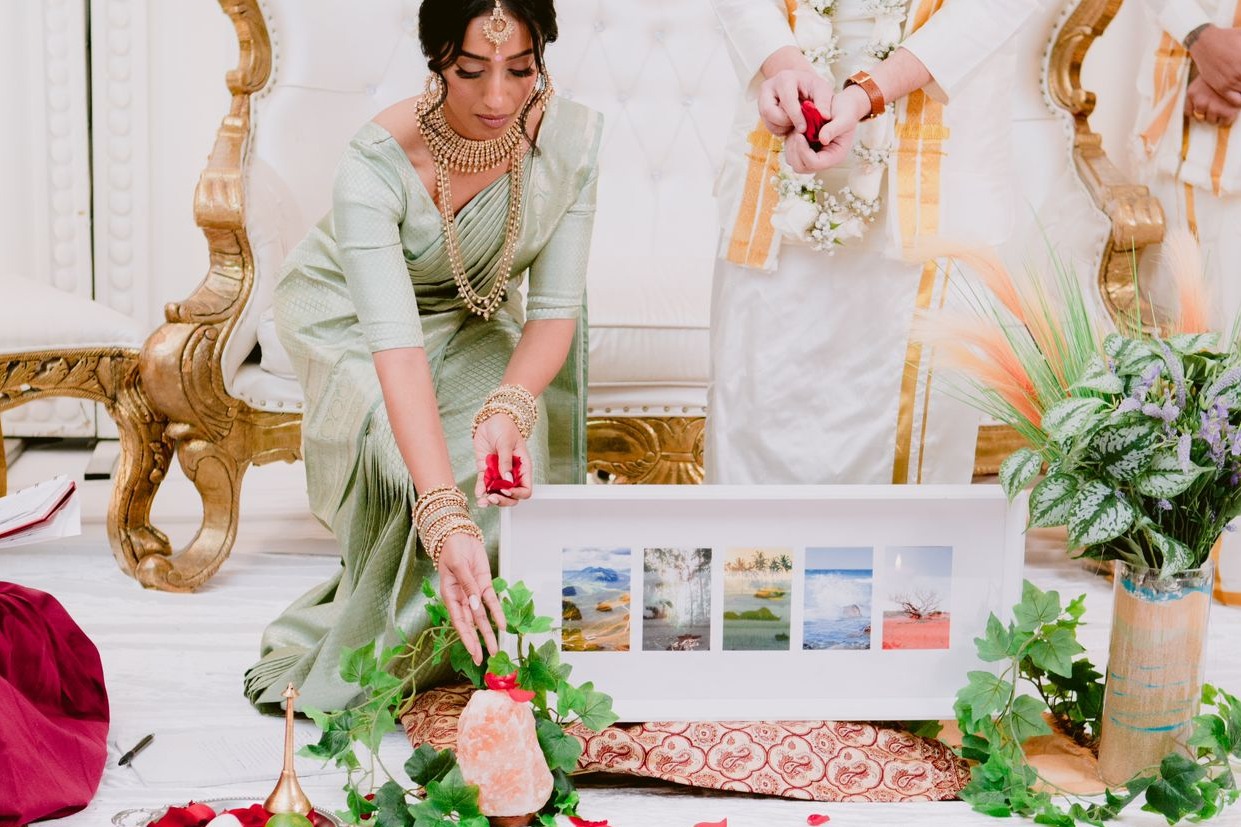
Date on your own terms! Join the other couples who have dated and married through myTamilDate.com!
It is typical for a Tamil-Hindu household to have photos of the deceased in their home shrine, among photos of Hindu Gods. However, this practice is often restricted or prohibited by other Hindu communities as the deceased cannot be held to have the same status as the Gods we typically worship.
So why is it common in Tamil households? My interpretation is that this tradition of having photos of deceased ancestors in the home shrine by Tamils may be something that has been passed on by the ancient Tamil tradition of erecting hero stones (Nadukal - நடுகல்) for the heroes that died by protecting their village and country.
Let’s learn about Nadukal. Arguably, the first form of idol worship by Tamils could have been erecting these hero stones to commemorate the death of their tribal heroes. The hero was worshipped with offerings of fresh water, flower garlands and sometimes even sacrificial blood. The belief is that the stone is inhabited by the hero’s spirit where the hero continues to protect the village.

The hero stones also vary in structure. Some hero stones only have inscriptions and others only sculptures (e.g. a hero fighting a tiger). There are also hero stones with both inscription and sculpture which provide the most information such as the name of the hero, how he passed away, and so on.
Tholkappiyam (the earliest Tamil literature) outlines the process of worshipping hero stones:
Searching for a suitable stone to be erected as a hero stone.
Fixing an auspicious time to erect the hero stone.
Bathing of the stone ceremoniously.
Setting up the hero stone.
Celebration and feasting to the erected hero stone.
Praising and worshipping of the stone by singing invocatory songs.
As you can tell, it’s a detailed process and our ancestors did not take this lightly!

It was important that I incorporate this into the weddings that I conduct. Hence, I offer couples two options: they can either bring photos of their ancestors or I can bring a symbolic stone that represents the Nadukal. I ask the couple to put flower petals on the photo or stone, paying respect to their ancestors. I cite ancient Tamil literature about Nadukal as the couple pay respect to their ancestors.
It’s fascinating how we continue traditions without knowing the exact reasons behind the practice. Keep learning. There’s so much out there!
Sources: Worship of hero stones in sangam literature by G. Ramanathan; Burial and Fuunerary Culture of Ancient Tamils (During 1000 B.C - 250/ 300 A.D) E. By Iniyan; பண்பாட்டு அசைவுகள் - தொ பரமசிவன்; தமிழா் நாகரிகமும் பண்பாடும் - முனைவா் அ.தட்சணாமூர்த்தி.
To learn more about ancient Tamil customs and practices follow @whatthepottu: https://www.instagram.com/whatthepottu/?hl=en
Photo credits: https://www.instagram.com/ramyaj.images/, Wikipedia
Looking to create your love story? Join the other couples who have dated and married through myTamilDate.com!
READ NEXT:

























